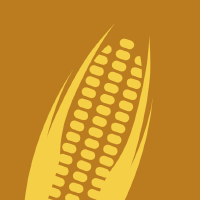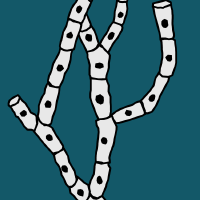Topic Menu
► Topic MenuTopic Editors




Mycorrhizal Fungi Mediated Sustainable Crop Production
Topic Information
Dear Colleagues,
The ubiquitous nature of arbuscular mycorrhizal fungi touches upon many new horizons related to the sustainable growing of both field and horticultural crops. The extensive network of extraradical hyphae outside the root systems of different host plants reach not only the immobilized nutrient reserves within the soil, but deposit highly recalcitrant carbon into the rhizosphere, thereby developing a microbial environment which is considered a prerequisite for sustainable crop production. These extraradical hyphae perform direct absorption of plant-assimilable nutrients, pump extra water to the host plant, and at the same time, maintain mycorrhizal proliferation for spore formation. Interestingly, the mycorrhizal hyphae release certain metabolites, such as glomalin, flavonoids, protons, amino acids, carboxylates and so on, forming a special microenvironment called the hyphosphere. These metabolites regulate the physical, chemical and biological dimensions of host plants and soil, and also mitigate environmental stresses, including the carbon-offset property of mycorrhizas. Regarding the roles that mycorrhizas play in developing a sustainable, healthy soil environment for improvised crop production, concerted efforts from the international research community are warranted to tackle these issues more precisely and meaningfully. We are seeking the contribution of original studies, reviews, and opinions for this Special Issue, in order to further streamline the agronomic and physiological roles of mycorrhizas with emphasis on the nature and properties of the mycorrhizosphere. Manuscripts relating to root-endophytic fungi are also welcomed. We are looking forward to receiving your valuable contributions.
Prof. Dr. Qiang-Sheng Wu
Prof. Dr. Qing Yao
Dr. Abeer Hashem
Dr. Anoop Kumar Srivastava
Topic Editors
Keywords
- extraradical hyphae
- glomalin
- hyphosphere
- mycorrhiza
- nutrient
- soil strucuture
- stress
- symbiosis
Participating Journals
| Journal Name | Impact Factor | CiteScore | Launched Year | First Decision (median) | APC |
|---|---|---|---|---|---|

Agriculture
|
3.3 | 4.9 | 2011 | 19.2 Days | CHF 2600 |

Agronomy
|
3.3 | 6.2 | 2011 | 17.6 Days | CHF 2600 |

Crops
|
- | - | 2021 | 22.1 Days | CHF 1000 |

Horticulturae
|
3.1 | 3.5 | 2015 | 16.9 Days | CHF 2200 |

Journal of Fungi
|
4.2 | 6.7 | 2015 | 17.7 Days | CHF 2600 |

MDPI Topics is cooperating with Preprints.org and has built a direct connection between MDPI journals and Preprints.org. Authors are encouraged to enjoy the benefits by posting a preprint at Preprints.org prior to publication:
- Immediately share your ideas ahead of publication and establish your research priority;
- Protect your idea from being stolen with this time-stamped preprint article;
- Enhance the exposure and impact of your research;
- Receive feedback from your peers in advance;
- Have it indexed in Web of Science (Preprint Citation Index), Google Scholar, Crossref, SHARE, PrePubMed, Scilit and Europe PMC.

